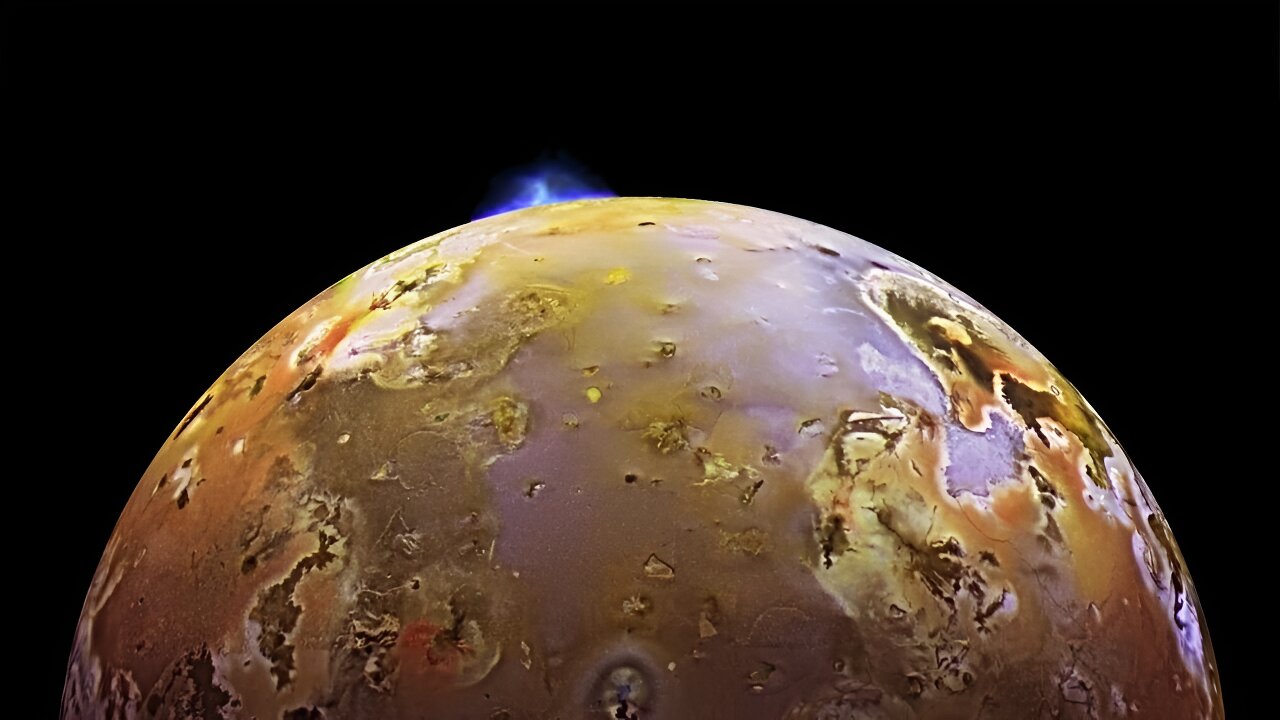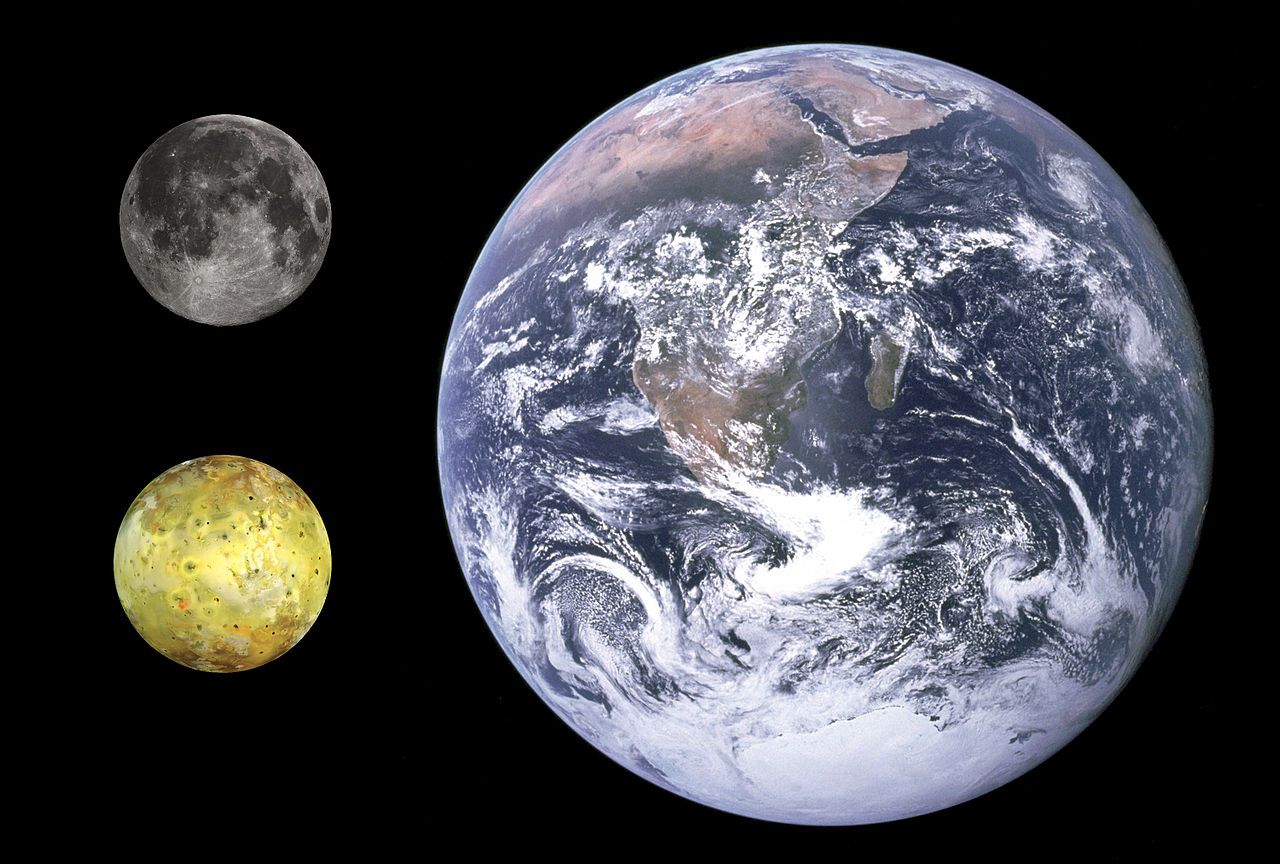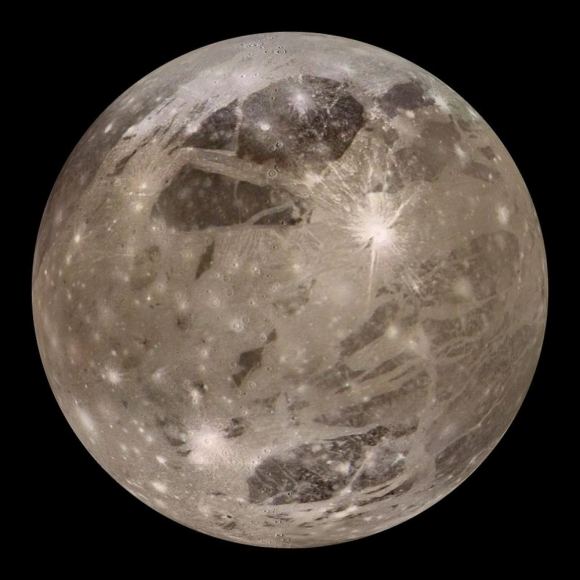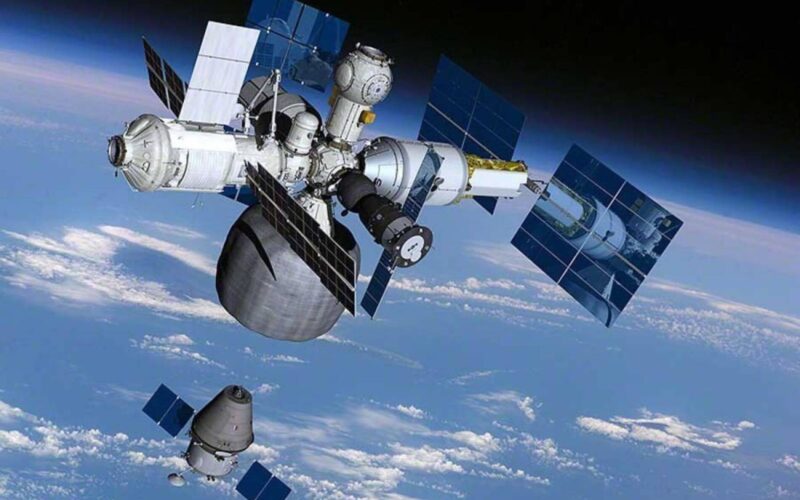
We’re probably all familiar with the concept of some Moons within our solar system – notably Saturn’s Enceladus, and Jupiter’s Europa, Ganymede and Callisto – potentially being completely encompassed by a liquid water (or at least a slushy) ocean under their surfaces. But how about a moon being almost completely encompassed by an ocean of hot volcanic magma just a few kilometres under its surface?
That’s the proposal contained within a new paper written under the auspices of NASA’s Jet Propulsion Laboratory, and based on an analysis of data obtained by the Jovial Infrared Auroral Mapper (JIRAM) instrument aboard NASA’s Juno mission in reference to Io, the innermost of the four Galilean moons of Jupiter.
Of course, we’ve long known that Io, a moon slightly larger than our own, is the most volcanic place in the solar system. More than 400 active volcanoes have been identified since we first witnessed one erupting in 1979, courtesy of NASA’s by Voyager 1 in 1979, and the Juno mission has imaged no fewer than 266 actively erupting during its periodic fly-bys of Io as it studies Jupiter and its moons. The overall driving force behind these volcanoes is tidal flexing deep within Io’s core and mantle, the results of the moon being in a constant state of flux thanks to the gravitational influences of (most particularly) Jupiter to one side and the three other Galilean satellites on the other.

However, there has always been something of a question as to how these volcanoes might – or might not – be related and directly powered. Here on Earth, volcanism usually occurs as a result of decompression melting within the asthenosphere – the upper limits of the mantle directly under the lithosphere/crust comprising solid and partially-melted rock. This gives rise to magma, which is then forced upwards through the lithosphere as localised volcanic eruptions. This was long held to be the case with Io, with scientists believing its volcanoes, like the majority on Earth, were driven by the upwelling of individual magma flows.
But during the Galileo spacecraft’s observations of Io between 1995 and 2003, the data gave tantalising hints that Io’s volcanism could be the result of a somewhat different process, but it has taken the unique capabilities of the Juno spacecraft to confirm this to be the case. By gathering extensive thermal and infrared imaging of Io’s mantle, the JIRAM instrument has been able to put together a comprehensive view of the upper layers of Io’s mantle, revealing that far from being a layer mix of solid and partially melted rock, Io’s asthenospheric region is entirely molten in nature.
In other words, lying just below Io’s lithosphere (roughly 12-40 km thick) is a moon-girdling ocean of magma, some 50 km thick, with a mean temperature of some 1,200ºC, and which powers all of Io’s active volcanoes.

This may not sound exciting in the scheme of things, but it further demonstrates the uniqueness and complexity to be found within the Jovian system.
A further example of this can be found with Io’s big brother, Ganymede. The third of the Galilean moons in terms of distance from Jupiter, Ganymede is not only the biggest of the Galilean moons orbiting Jupiter, it is the biggest and most massive natural satellite in the solar system. In fact, if it were orbiting the Sun rather than Jupiter, it would be classified as a planet, being even larger than Mercury.
Ganymede, like its smaller siblings around Jupiter – and the rocky planets of the inner solar system – is a complex place enjoying a complicated relationship with its parent; one which shares near-similarities with Earth’s relationship to the Sun.
Much has long been known about Ganymede as a result of observations made from Earth – such as via the Hubble Space Telescope – and by the various missions which have flown past or orbited Jupiter. These have helped us confirm that Ganymede has a sufficiently warm interior to support a global liquid water ocean beneath its crust, an ocean larger by volume than all of Earth’s combined.

We’ve also been able to (largely) confirm the presence of a tenuous atmosphere of oxygen and CO2, which seems to be particularly concentrated around the northern and southern latitudes, likely constrained by the interaction between Ganymede’s weak magnetic field and the far more powerful magnetic field generated by Jupiter – the predominant O2 content of the atmosphere is thought to be the result of water vapour escaping the moon’s interior being spilt by the radiation carried down over the poles by the magnetic field interaction.
It is this interaction between radiation, magnetic fields and the surface of Ganymede which have been part of the focus of a study made of the moon using instruments on the James Webb Space Telescope (JWST), and which was recently published.
Ganymede’s surface is dominated by two types of terrain: bright, icy features with grooves, covering about two-thirds of Ganymede’s surface, and older, well-cratered and darker regions )on places scored by asteroid impacts of the moon’s more “recent” past, which could not be confused with the brighter terrain) . The two terrain types are not differentiated in terms of their location on Ganymede’s surface, they are instead intermingled, with the lighter terrain cutting swathes across the darker terrain.

Some of these brighter swathes – notably those around the Polar Regions – carry strong evidence of water ice, which appears to have been exposed by (in the words of the study) “the combination of micro-meteoroid gardening, excavating the ice, and ion irradiation”.
In other words, over the millennia, dust and material has been caught within the interactions between the two magnetic fields, smashing into the moon’s surface to expose the underlying water ice, allowing it to be irradiated by plasma also carried by the inflowing magnetic field, causing some of it to escape as water vapour which has been either further irradiated and broken down (thus giving rise to the accumulation of the tenuous, O2-rich atmosphere near the surface), or re-accreting as easily-identified water ice on the surface rock.
Whilst the two magnetic fields interact around Ganymede’s poles and along the moon’s “trailing edge” as it orbits Jupiter in a very similar manner to the interaction between Earth’s magnetic field and that of the Sun over our own poles, the spectral properties seen along the moon’s ”leading edge” in its orbit suggest that there is a far more complex, and yet to be understood interaction taking place between the magnetic fields of planet and satellite. Solving this mystery might require time – and some assistance in the form of the European Space Agency’s Jupiter Icy Moons Explorer (JUICE) mission launched in April 2023, and due to reach the Jovian system in 2031, where it will likely uncover more surprises about both Ganymede and Europa.
Roscosmos Confirms “80%” of Russian ISS hardware Beyond “Permissible Periods of Existence”
Following the coolant leak from the Russian Nauka Multipurpose Laboratory Module (MLM) on the International Space Station (see: Space Sunday: a bit of a round-up), the head Roscosmos, the Russian space agency, has once again publicly stated that the vast majority of the Russian hardware flown on the ISS – modules, life support systems, etc., – is now beyond all warranty periods, with the implication that further breakdowns might be expected.
While the ammonia leak was outside the ISS and posed no direct risk for the crew, a planned spacewalk was postponed to avoid any significant risk of spacesuits being contaminated by the compound and being brought back inside the station, it nevertheless sparked concern about the overall status of Russian elements within the space station and the Russian space sector in general.
The International Space Station is approaching the finish line of its existence. We extended the operation of the Russian segment by government decision until 2028, but, unfortunately, it has already exceeded all permissible periods of existence [and] eighty percent of the Russian equipment is beyond the warranty period.
– Roscosmos Director Yuri Borisov
Borisov’s comments are not the first time the life expectancy of the Russian modules on the ISS has been highlighted; Roscosmos first pointed to many of them reaching the limits of their Planned lifetimes in 2021 and again in 2024. As pointed out in these pages, despite being launched in 2021, Nauka itself was pushing the limits of its warranty, the core of the module having been built in the late 1990s / early 2000, when it was expected to be launched to the ISS in 2007.

His comments also pointed out the need for Roscomos to better manage its projects and put an end to the corruption evident within much of its expenditure, pointing specifically to the 16-year development cycle of the recently failed Luna 25 mission (see here and here for more).
In this he echoed Vladimir Putin’s words from earlier in the week, when he both indicated that corruption would not be tolerated and that Roscosmos is to be more focused. In this, Putin specifically reaffirmed Russian’s commitment to having its own national space station – the Russian Orbital Service Station (ROSS) operational by 2029/2030 (when Russian activities will transition to it from the ISS ahead of the latter’s decommissioning), with the first module to be launched in 2027.
China’s ILRS: A Video Vision of Fact or Fantasy?
This column has long covered the Chinese space programme, primarily because, despite being one of the “new kids on the block” in terms of human spaceflight, the Chinese programme has been singularly impressive in its focus.
Whilst China’s overall space ambitions as a whole have roots reaching as far back as 1968, it was not until 1992 that the country really started developing a human spaceflight capability with the founding of the China Manned Space Programme and initiation of the human-rated Long March 2F rocket programme.

Then in 1996, China signed an agreement with Russia which both allowed Chinese taikonauts to train at the Yuri Gagarin Cosmonaut Training Centre, and the country to purchase Russian Soyuz hardware and space suits, the latter of which heavily informed the development of China’s Shenzhou (“divine vessel”) spacecraft, allowing the first test vehicle to be developed and launched in just 3 years, with crewed flight commencing just two years later, in 2001.
Since then, China has rapidly iterated through the steps required for extended on-orbit spaceflight operations, moving from lone capsules in orbit, through rendezvous and docking operations the development of two orbital laboratory facilities (Tiangong 1 and 2) and the on-orbit development of a fully-fledged, multi-module space station (also confusingly called Tiangong, but without a number after it).
All of which has been remarkable, even allowing for the initial “leg up” presented by the study of Russian space hardware and facilities. What is more, this work is all part of a much longer-term goal: to put humans on Mars by way of the Moon along the way. And just like the development of their human spaceflight capability, the China Manned Space Programme is now laser-focused on the lunar element of this plan.
This will take the form of the International Lunar Research Station (ILRS), a base to be established, like the US-led Artemis programme, in the lunar South Polar Region. Initially a joint Chinese-Russian programme (with the former very much the senior partner), the project has grown to include Venezuela, Pakistan, the United Arb Emirates, South Africa, Azerbaijan and Belarus as official partners, with companies and organisations from Germany, France, Switzerland, Italy, the Netherlands, Malaysia and Thailand, together with the UN Office for Outer Space Affairs also potentially posed for participation.
Details of the ILRS have been somewhat scant – the Chinese have indicated that they plan to start construction potentially as early as 2026 through the use of robotic missions, with crews arriving from 2030 onwards to help further develop the base and move it to operational status by the mid-2030s – but other than this, specifics haven’t been cohesively presented. Rather, hints have been dropped about the potential to use lunar lava tubes for the base itself, the establishment of a Moon-orbiting space station for staging crews between the lunar surface and Earth, the use of in-situ resources – water ice or water / oxygen production, refined lunar regolith for “Mooncrete” and 3D printing material as well as mineral / chemical extraction, etc., – to sustain the base, but no overall plan has been surfaced for public consumption – or has it?
A video recently surfaced on You Tube which appears to show the presentation of a film demonstrating how China is looking to develop its base. However, the exact context of the video, together with its provenance, is not given, nor can it be confirmed; therefore how accurate / official it might be is open to question.
On the one hand, much of it does fall into line with some of the statements made by CMSA officials – the use of a lava tube in which to house the base, the orbiting lunar facilities, the tying (through the commentary) of a lunar base to the longer-term goal of reaching Mars, the use of in-situ resources, etc. On the other, however, there is much that appears fanciful about it, such as using a penetrator and automated system to blast a hole into a lava tube, lean it up and then fly a lander through the hole and into the tube to form the nucleus of a base. Nor do all of the vehicles seen in the video align with current concepts for the likes of lunar lander craft, etc.
As such, the video could purely be aspirational for the Chinese public, rather than indicative of an actual programme that is to be developed – so the contents of the video should be taken with a pinch of salt – but it does make for interesting viewing, and I’ll leave you to judge it for yourselves.